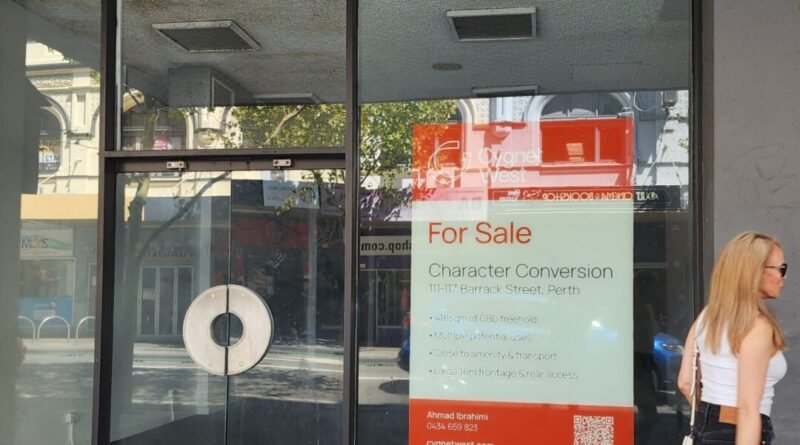Businesses Face Growing Risk of Failure, Hospitality Industry in Particularly Uncertain Territory
The outlook for business continues to worsen, with CreditorWatch forecasting that 1 in 11 businesses in the hospitality sector will fail in the next year, and the situation is not much better for other sectors.
The failure rate for Australian businesses across all sectors is expected to rise, with hospitality being particularly vulnerable.
New data released by CreditorWatch today reveals that the value of current orders has hit a record low, dropping by 49.9 percent year-on-year as businesses reduce their inventory in response to declining consumer demand and increased prices.
This reduced demand is leading to more businesses accumulating debt and facing the risk of closure.
The hospitality industry is especially at risk, with a predicted failure rate of 9.1 percent—or one in 11 businesses. This marks an increase from 7.51 percent the previous year.
Overall, the business failure rate has gone up by 8.8 percent compared to last year.

Historically, the hospitality sector experiences a higher failure rate compared to other industries during tough economic times, mainly because it heavily depends on discretionary spending.
As consumers have less to spend on non-essential items due to increased expenses such as mortgage payments and utility bills, businesses in other sectors are also facing challenges.
However, the situation is slightly better for other sectors, with an average failure rate across the economy at 5.1 percent.
Even industries like transport, postal, and warehousing are not exempt, with a risk factor of 5.45 percent.
Several other sectors like arts and recreation, education and training, administration and support services, financial and insurance services, and accommodation are also underperforming compared to the average.
Only construction and manufacturing are expected to see a decrease in failure rates, with their overall rates at or slightly below the average.
Invoice Defaults
Another indicator of business health, the number of businesses defaulting on invoices, has increased according to the CreditorWatch study, despite lower order values.
Defaults decreased from May to June but have been on an upward trend since mid-2021 and are now higher than pre-COVID levels, indicating businesses are struggling with rising costs and declining demand.
CreditorWatch notes a strong connection between a B2B payment default and the likelihood of a business failing in the following months.

Court actions have also risen significantly above pre-COVID levels, with a 37 percent increase in actions in the year leading up to June 2024. Meanwhile, credit inquiries remained flat throughout 2024 after a drop from May to June.
The Australian Taxation Office (ATO) is actively pursuing $34 billion in debts from small businesses and self-employed individuals, with total collectable debt reaching $52.4 billion as of December 31, 2023.
CreditorWatch identifies food and beverage services as the top-ranked industry for outstanding ATO tax debts above $100,000, with a rate of 1.65 percent. Construction and electricity, gas, water, and waste services follow closely at 1.18 percent and 0.94 percent, respectively.
Patrick Coghlan, CEO of CreditorWatch, described the situation as “truly dire” for Australian businesses.
“The combination of declining order values and increasing payment defaults is a major concern as it indicates more businesses are experiencing both cost and demand pressures,” he said.
“With another rate increase becoming increasingly likely, we expect both metrics to deteriorate even further. Small businesses are hurting the most as they are more vulnerable to adverse economic conditions than larger businesses. They operate on tighter margins and are less able to take measures to cut costs.”
Regional Differences
Regional variations show that Adelaide City continues to have the lowest insolvency risk among CBDs.
The area benefits from lower rents and a high number of workers and international students, resulting in an overall default rate of 4.94 percent over the next 12 months, up from 3.98 percent the previous year.
All other state capitals carry a higher-than-average risk, with Perth at 5.19 percent (up from 4.10 percent), Melbourne at 5.87 percent (4.20), Brisbane at 6.01 percent (4.46), and Sydney at 6.20 percent (5.08).
The top four riskiest areas in New South Wales are Bringelly-Green Valley (7.84 percent), Merrylands-Guildford (7.82 percent), Canterbury (7.66 percent), and Auburn (7.46 percent).
Note that these rankings are based on areas with at least 5,000 businesses operating.
CreditorWatch does not anticipate an improvement in the situation for small businesses anytime soon, despite decreasing demand and financial challenges.
Anneke Thompson, Chief Economist at CreditorWatch, explained that the Reserve Bank of Australia requires several months of data before making decisions to ensure the correctness of their choices.
“While this approach is theoretically sound, in practice, it means that businesses have to deal with high interest rates even after consumer demand has dropped and discretionary spending has significantly declined,” she said.






